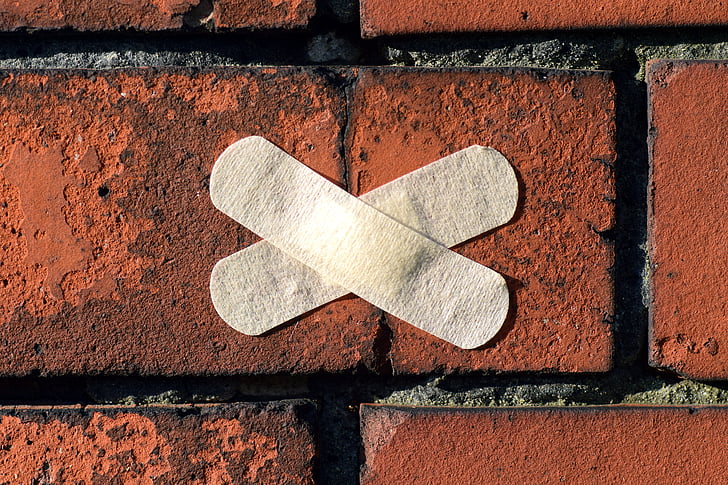Basic brickwork replacement
Contents |
[edit] Introduction
Replacing faulty or decayed brickwork can be a difficult process, but simple projects may only require these steps.
[edit] Preparations
Cut away the damaged brick, clean out the hole completely and make sure no dust remains. Gently douse the newly created void with water, making sure to include the top and sides of the recess. Include the surrounding brickwork as well.
Fit the replacement brick into the space that has been created. It should fit easily into the hole, with sufficient space for mortar to surround it. Remove the brick and trim away some of the bottom bed edge so it looks like a slightly truncated wedge.
Cover the underside of the top brick with mortar for the top bed-joint. Some will naturally fall onto the bottom surface of the recess. This should be spread across the sides and bottom to form the cross joints and bed joint.
[edit] Positioning and placing
Take the replacement brick, cover all of it (except the face) with a coat of mortar, place it into the hole and then drive it in gently but firmly with the end of a brick hammer. Additional pressure may be applied by using a small piece of wood and a lump hammer. It is important to keep the brick level during this process; otherwise, it will be difficult to straighten it and the surface will not be flush.
When the brick is pushed into place, extra mortar will be forced out. This should be removed with a trowel.
Once the brick is driven into the proper position, some of the mortar should be left projecting from the joint. Once the extra mortar begins to stiffen, it can be pushed back into the joint with the edge of the trowel. This should solidify the joint and help to make the repaired brick a more integral part of the wall.
[edit] Related articles on Designing Buildings
Featured articles and news
International Electrician Day, 10 June 2025
Celebrating the role of electrical engineers from André-Marie Amperè, today and for the future.
New guide for clients launched at Houses of Parliament
'There has never been a more important time for clients to step up and ...ask the right questions'
The impact of recycled slate tiles
Innovation across the decades.
EPC changes for existing buildings
Changes and their context as the new RdSAP methodology comes into use from 15 June.
Skills England publishes Sector skills needs assessments
Priority areas relating to the built environment highlighted and described in brief.
BSRIA HVAC Market Watch - May 2025 Edition
Heat Pump Market Outlook: Policy, Performance & Refrigerant Trends for 2025–2028.
Committing to EDI in construction with CIOB
Built Environment professional bodies deepen commitment to EDI with two new signatories: CIAT and CICES.
Government Grenfell progress report at a glance
Line by line recomendation overview, with links to more details.
An engaging and lively review of his professional life.
Sustainable heating for listed buildings
A problem that needs to be approached intelligently.
50th Golden anniversary ECA Edmundson apprentice award
Deadline for entries has been extended to Friday 27 June, so don't miss out!
CIAT at the London Festival of Architecture
Designing for Everyone: Breaking Barriers in Inclusive Architecture.
Mixed reactions to apprenticeship and skills reform 2025
A 'welcome shift' for some and a 'backwards step' for others.
Licensing construction in the UK
As the latest report and proposal to licence builders reaches Parliament.
Building Safety Alliance golden thread guidance
Extensive excel checklist of information with guidance document freely accessible.
Fair Payment Code and other payment initiatives
For fair and late payments, need to work together to add value.
Pre-planning delivery programmes and delay penalties
Proposed for housebuilders in government reform: Speeding Up Build Out.
High street health: converting a building for healthcare uses
The benefits of health centres acting as new anchor sites in the high street.

























